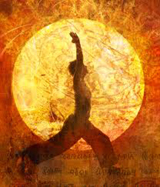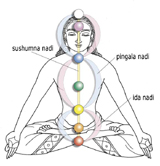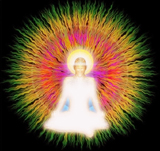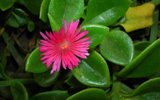Perspective
The concept of mind according to Āyurveda
Abstract
In traditional Āyurveda, generations back, the vaidyas (considered to be physicians in those days) used to treat the body and mind together. This was because the mind and body interrelate with each other and diseases relating to the body affect the mind and vice-versa. This article is an attempt to explain the various parameters associated with the human mind. The author has also described the process of treating the mind through traditional pañcakarma. He concludes with a brief case description.In traditional Āyurveda, the human being is made of the Form (gross body), the Formless (soul) and the Mind. In Tantra Yoga, it is symbolised as Shiva, Shakti and Mind. When all three aspects of a human being are in perfect harmony, that person is said to be in a healthy state.
The gross body or form is made up of 72,000 channels, which can be controlled by 100 channels. These 100 channels can in turn be controlled by 10 channels. These 10 channels are called daśavāyus (the 10 nervous energies). These daśavāyus can be controlled by three major channels called iḍā, piṅgalā and suṣumnā.
Iḍā is manifested in the left nostril breath, piṅgalā in the right nostril breath and suṣumnā is the central channel regulating the breathing patterns of both the nostrils, iḍā and piṅgalā. Whenever the mind is disturbed, the breathing patterns in both the nostrils will be disturbed.
In spirituality, iḍā is supposed to be like the river Yamuna, piṅgalā is like the river Ganga and suṣumnā is the unseen Sarasvati.
Āyurveda considers the mind a channel too. It has many channels. The channels of the mind are called manovahanāḍīs.
Two important channels of the mind are iḍā and piṅgalā , represented in the breath from the left nostril and right nostril respectively. The mind is considered to be an organ which always seeks pleasure.
Āyurveda explains that the mind and body have an inseparable relationship. Diseases of the body affect the mind and vice-versa.
The great Āyurvedic master, Caraka gives an example. When hot ghee is poured into a vessel, the vessel too gets hot. Similarly, diseases of the body affect the mind and diseases of the mind affect the body. Whenever a physician treats a patient with a chronic disease, he should first treat the mind before treating the disease because when the mind is calm, the body heals faster.
Qualities of mind
Anutthom (subtlest among the subtle) — one doesn’t know where the seat of mind is. It is everywhere in one’s body in a subtle form.
Aekhatthom (individualistic) — 'Your mind is yours'.
The manaścakra is the cakra which controls the mind.
Tantra explains that this cakra is situated above the ājñā cakra (the third eye).
Stages of mind
• Manas — it is a receiving station of information from the pañca indriyas. The pañca indriyas are the eyes, ears, tongue, nose and skin.
• Citta — the state where the information thus received from the pañca indriyas is put into action as to how, where and when.
• Buddhi — the state of mind where good and bad thoughts are discriminated and eventually bad thoughts are eliminated.
• Ahannkaara — the state of mind where a command is given to the karmendriyas that‘I and only I should get good thoughts, and bad thoughts should be eliminated out of me.‘ The karmendriyas are the hands, feet, tongue, excretary organs and sexual organs.
• Mahat — the unique quality of ‘I, me and myself‘ in mind. (self, ego)
5 BhDvas of mind
• Bodha manas — this is a state where a person is in jāgardavasthā (active state). This is the normal state of mind. When a person loses this state of mind, he becomes abnormal.
• Upha bodha manas — a state of mind experienced by someone during sleep.
• Abodha manas — a state of mind experienced by someone during deep sleep, which is called sussupti.
• Adhibodha manas — an artificial state of mind for a yogi who attains tūrīyāvasthā (Enlightenment). At this stage, the yogi derives tremendous knowledge, knowledge which is not known to anyone.
• Samaṣṭi manas — the state of mind of a yogi when he attains samādhi (mokṣa) when there is no longer any discrimination between you and me. This is the Universal Mind.
3 Guṇas of mind
1. A person with sattva gunna predominance — the root-cause of a person attaining yoga and mokṣa. It purifies the mind and leads to Brahma sākṣāt kara or realisation of God. The colour of this is white. The tattva is rasa or water. His mind would be very clear and would always indulge in doing good things.
2. A person with rajogunnza predominance — this state is against yoga. It would not help a person in attaining mokṣa. This state acts as a shield to cover the Brahma as māyā. The colour is red. The tattva is earth. The mind would be egoistic, offensive, dominant and highly energetic. It takes success in a very egoistic way and cannot stand failures. The quality of this state is always sorrow.
3. A person with tamogunna predominance — this state is against yoga and mukti. It is Ajñana Svarūpī (against the gaining of ultimate knowledge). It instigates the mind to venture into bad karma. The tattva is fire. It is destructive in nature. The colour of this is black. This state has the characteristic of generating desires leading to sorrow.
Drugs
A few raw drugs used to treat patients:
• Brāhmī — Hydrocotyle — Asiatica
• Vacā — Acorus — Calamus
• Aśvagandhā — Withania — Somnifera
• Balā — Siddhā — Cordifolia
• Nirguṇḍī — Vitex — Negundo, etc.
Treatment
The initial stage of traditional pañcakarma is the intake of medicines like aśvagandhāriṣtam, sārasvatāriṣtam, mānasamitra, vaṭākam, suvarnamuthiadhi guliga, svarṇabhasma and muktābhasma. These help a patient in internally opening the manovahanadīs.
At the second stage, patients are advised to take brāhmīghṛtam, kalyanagaghṛtam and pañcagavyaghṛtam which is according to the snehapāna treatment. This is for a period of 3-5 days, depending upon the person’s digestive power.
After this, there is a mild purging to push out the toxins from the body.
A treatment called śirovasti is performed on the head of the patient for a period of 7 days with candanādi tailam, ksīrabalā tailam and himasāgara tailam.
By doing this śirovasti, oxygen supplied to the brain will be increased, thereby activating the twenty-four curative hormones, which results in a neuro-linguistic effect on the brain of the patient, which gives a feeling of easiness.
A treatment called sarvāṅgadhārā is performed on the patient for a period of 21 days with bālāśvagandhādi kujambu, lakṣādhāi kujambu, dhanvandharam kujambu and piṇḍa tailam. This results in a purification of the 72,000 channels of the body, whereby the Form, Formless and Mind are synchronised.
A case
A patient from Brazil visited us in February, 2013. She used to work for an organisation where she was involved in doing a lot of research and analysis throughout the day. This made her stress levels climb to a very high level. As a result of this, she had been getting her periods only once a year, over the past ten years. She was also suffering from severe back and joint pain with sciatica.
She had come to us for a pañcakarma treatment. On the first phase of the treatment itself, when the manovahanāḍīs were opened up, she got her period. During the 41 days of treatment she underwent with us, she had her period twice and obtained relief from all the pains.
She was completely de-stressed by the end of the treatment.
Dr. E. Shaji Raj, a direct disciple of Brahmashri Parabattaraka Ananganandanathan Padathirtha, is presently Chairman and Chief Physician at Punarjanis Life Sciences Pvt. Ltd, Chennai, India.
Share with us (Comments,contributions,opinions)
When reproducing this feature, please credit NAMAH,and give the byline. Please send us cuttings.




